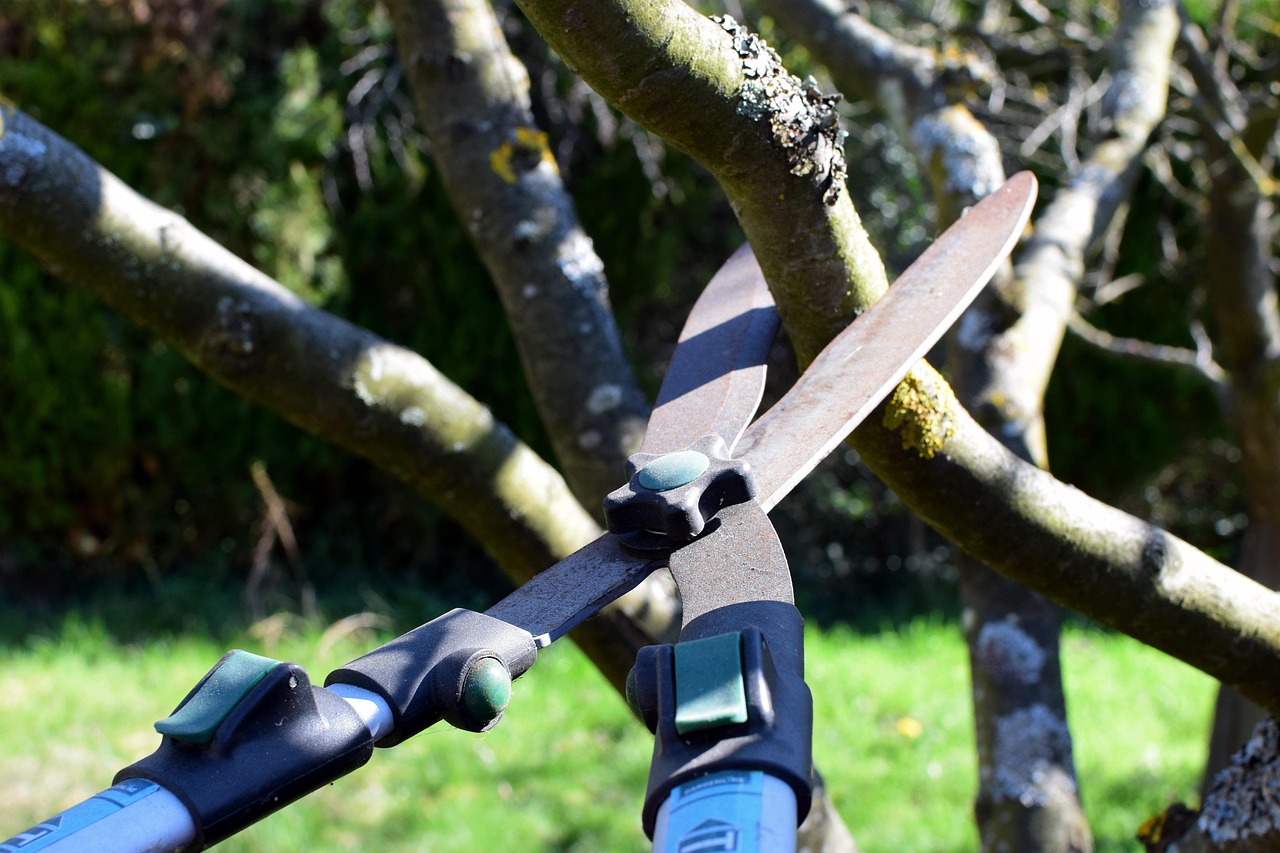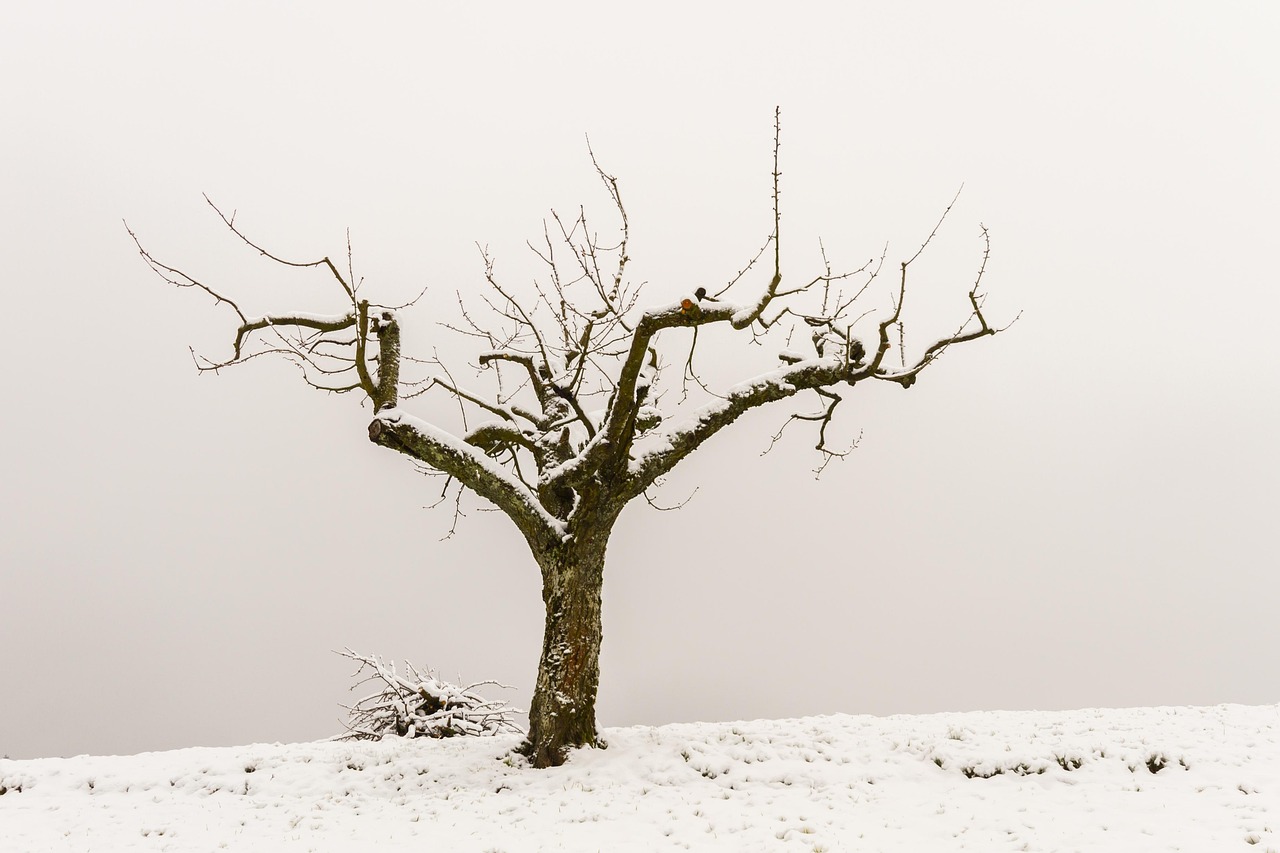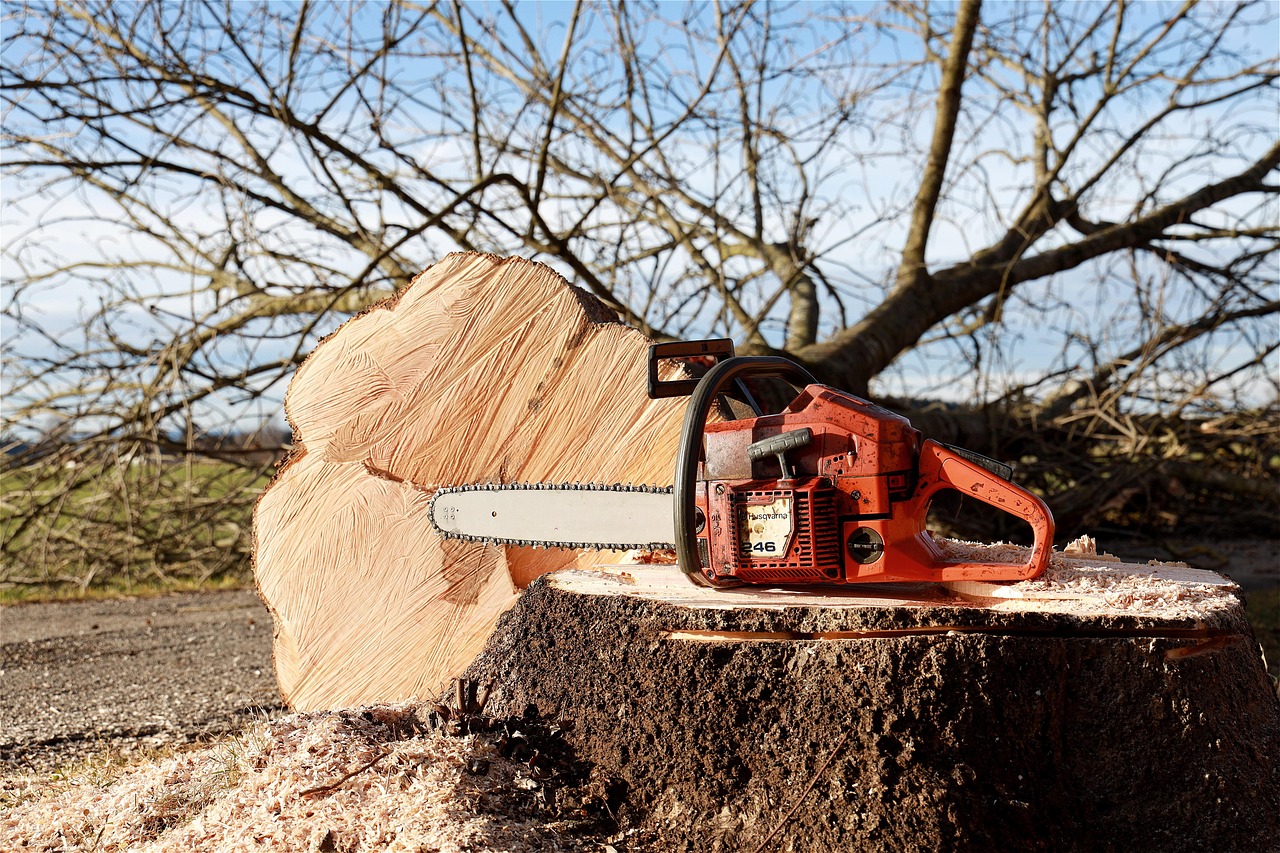Understanding tree pruning heights is essential for ensuring the safety and health of both the tree and surrounding structures. Proper pruning techniques can prevent hazards, promote growth, and enhance the overall appearance of the tree.
Tree pruning is a crucial aspect of tree care. It involves selectively removing branches to improve the health, appearance, and safety of trees. Pruning can seem daunting, especially when considering the correct heights at which to prune. However, understanding the appropriate pruning heights can lead to healthier trees and safer environments.

One important factor to consider is the specific species of the tree. Different trees have different growth patterns and requirements. For example, fruit trees require a specific pruning approach to encourage fruit production, while shade trees may need minimal pruning for structural integrity. Additionally, local regulations may dictate how and when certain trees can be pruned, especially in urban areas.
Another factor is the purpose of pruning. Are you looking to reduce the height for safety reasons? Or are you aiming to shape the tree for aesthetic purposes? Understanding your intentions will guide your pruning decisions.
Factors Influencing Pruning Heights
Several factors influence the ideal pruning height for trees. These include species type, tree age, and environmental considerations. It’s essential to evaluate each tree individually based on these factors.

| Factor | Description |
|---|---|
| Species Type | Different species have varying growth habits and requirements. |
| Tree Age | Younger trees often require different pruning techniques compared to mature trees. |
| Environmental Conditions | Consider the surroundings, such as power lines or buildings, which affect pruning height. |
For instance, young trees are often pruned to encourage strong central leaders and develop a good structure. It is best to prune them to a height that promotes vertical growth while avoiding damage to surrounding infrastructure. Mature trees might not require extensive pruning but should have dead or diseased branches removed regularly for safety.
Recommended Pruning Heights for Common Trees
Each tree species has its own recommended pruning heights. Here are some common types and their general guidelines:
- Fruit Trees: Prune to about 6 to 8 feet to encourage better fruit production and accessibility.
- Shade Trees: Maintain a height of 8 to 12 feet for clearance over pathways and structures.
- Ornamental Trees: Prune to maintain desired shape, typically around 6 to 10 feet.
In addition to these guidelines, it is also essential to consider the safety of nearby areas. Trees near power lines or structures may require more cautious approaches. It is often recommended to consult with professionals in these cases.

The Importance of Timing
The timing of pruning also plays a significant role in its effectiveness. Pruning at the wrong time can lead to increased vulnerability to pests and diseases. Generally, it is best to prune during late winter or early spring before new growth begins. This timing allows for better healing and reduces stress on the tree.
However, certain species may have specific needs. For example, flowering trees often benefit from pruning after they bloom to avoid cutting off next year’s flowers. Understanding the best time for each type of tree is vital for successful pruning.
Tools and Techniques for Safe Pruning
Using the right tools is crucial for effective pruning. Sharp tools will make clean cuts, promoting faster healing. Common tools include:

- Hand Pruners: For small branches up to ¾ inch thick.
- Loppers: For branches up to 2 inches thick.
- Saws: For larger branches requiring more power.
Additionally, proper techniques must be employed when making cuts. The cuts should be made at an angle just above a bud or branch junction. This encourages healthy regrowth and minimizes damage.
Understanding tree pruning heights is essential for maximizing success in tree care. By considering species type, age, and environmental factors, you can ensure your trees remain healthy and safe while enhancing their beauty in your landscape.
Identifying Signs That Pruning is Necessary
Recognizing when to prune is just as important as knowing how to prune. Trees often exhibit signs indicating that they require attention. Paying close attention to these signs can help maintain tree health and safety.
- Dead or Dying Branches: These branches can pose a hazard. They should be removed promptly to prevent potential accidents.
- Crowded Branches: When branches grow too close together, they compete for sunlight and resources. Pruning helps improve air circulation and light penetration.
- Overgrowth: If a tree is growing into power lines or obstructing views, it may need pruning for safety and visibility.
- Diseased Areas: Signs of disease, such as discoloration or unusual growths, warrant immediate pruning to prevent the spread.
Understanding the Different Pruning Techniques
There are several pruning techniques, each suitable for different situations and goals. Knowing which technique to use can greatly affect the health and appearance of the tree.
Crown Thinning
Crown thinning involves selectively removing branches to reduce density while maintaining the overall shape. This technique enhances light penetration and airflow within the tree.
Crown Raising
Crown raising is the practice of removing lower branches to increase clearance. This technique is particularly useful for trees near sidewalks or driveways.
Crown Reduction
Crown reduction reduces the height or spread of a tree while maintaining its natural shape. This technique is often employed for mature trees that have grown too large for their space.
Pollarding
Pollarding is a technique where young tree shoots are cut back to encourage new growth. This method is often used for aesthetic purposes and in urban areas where height control is necessary.
| Technique | Description | Best For |
|---|---|---|
| Crown Thinning | Removes selected branches to improve light and air flow. | Mature trees with dense foliage. |
| Crown Raising | Involves removing lower branches to provide clearance. | Trees near walkways or roads. |
| Crown Reduction | Reduces overall height or spread while maintaining shape. | Trees that have outgrown their space. |
| Pollarding | Cutting back young shoots to promote new growth. | Trees that need height control in urban settings. |
Safety Considerations While Pruning
Pruning can be hazardous work, especially when using sharp tools or working at heights. It is essential to follow safety guidelines to protect yourself and others around you.
- Wear Protective Gear: Always wear safety goggles, gloves, and sturdy footwear to protect against falling branches and sharp tools.
- Check Weather Conditions: Avoid pruning in windy or wet conditions. Wet surfaces can lead to slips, while wind can destabilize ladders or tools.
- Use Proper Ladder Safety: Ensure your ladder is stable and at the correct angle. Never overreach while on a ladder, as it increases the risk of falling.
- Know Your Limits: If a job requires specialized knowledge or equipment, consider hiring a professional arborist.
The Role of Tree Health in Pruning Decisions
The overall health of a tree significantly influences pruning decisions. Healthy trees can withstand more extensive pruning, while stressed or unhealthy trees may react negatively. Regular assessments can help identify health issues early on.
Look for signs of stress, such as:
- Pests: Infestations can weaken trees, making them more susceptible to damage from pruning.
- Disease: Fungal infections or other diseases can affect how much a tree can be pruned without further harm.
- Nutrient Deficiency: Trees lacking essential nutrients may show poor growth or leaf discoloration, indicating they need care before extensive pruning.
Consulting with a certified arborist can provide valuable insights into the best approach for pruning based on the tree’s health and condition. By prioritizing tree health in your pruning strategy, you ensure a successful outcome that benefits both the tree and its environment.
Seasonal Considerations for Pruning
The season in which you prune can have significant implications for tree health and growth. Different seasons offer unique advantages and challenges. Understanding these can help optimize your pruning efforts.
- Spring: Best for many deciduous trees as they are preparing for new growth. However, avoid pruning spring-flowering trees until after they bloom.
- Summer: Ideal for light pruning to remove dead or diseased branches without stimulating new growth that may not harden before winter.
- Fall: Generally not recommended due to the risk of winter damage. Trees may not heal properly before cold weather arrives.
- Winter: A good time for most trees as they are dormant. This minimizes stress and allows for better healing when spring arrives.
By considering seasonal factors in your pruning schedule, you can enhance the effectiveness of your tree care practices while promoting long-term health and safety.
Pruning Techniques for Different Tree Types
The technique and height at which you prune trees can vary significantly based on the specific type of tree. Different species have unique growth habits, structures, and requirements. Understanding these differences is essential for successful pruning.
Deciduous Trees
Deciduous trees lose their leaves in the fall, and their pruning needs often revolve around maintaining structure and encouraging healthy growth in the spring. Common deciduous trees include oaks, maples, and elms.
- Pruning Height: Typically, prune to maintain a height of 8 to 12 feet to ensure clearance and promote proper growth.
- Best Time to Prune: Late winter or early spring before new growth begins is ideal for most deciduous trees.
- Technique: Crown thinning or raising can be effective in managing shape and growth.
Evergreen Trees
Evergreen trees maintain their foliage year-round. They require different pruning strategies compared to deciduous trees. Common examples include pines, spruces, and firs.
- Pruning Height: Aim for a height that maintains natural shape while avoiding overgrowth; typically around 6 to 10 feet.
- Best Time to Prune: Late spring or early summer is preferable, as it allows for minimal stress during active growth.
- Technique: Light pruning to remove dead or diseased branches is often recommended.
Fruit Trees
Fruit trees require careful pruning to ensure healthy fruit production. Popular fruit trees include apple, pear, and cherry trees.
- Pruning Height: Maintain a height of about 6 to 8 feet for easier harvesting and care.
- Best Time to Prune: Late winter or early spring before flowering encourages optimal growth.
- Technique: Thinning cuts promote better air circulation and light exposure for fruit development.
| Tree Type | Pruning Height | Best Time to Prune | Recommended Technique |
|---|---|---|---|
| Deciduous Trees | 8 to 12 feet | Late winter/early spring | Crown thinning/raising |
| Evergreen Trees | 6 to 10 feet | Late spring/early summer | Light pruning |
| Fruit Trees | 6 to 8 feet | Late winter/early spring | Thinning cuts |
The Impact of Environmental Factors on Pruning
The environment plays a significant role in how trees respond to pruning. Factors such as soil quality, moisture levels, and local climate conditions can influence tree health and growth patterns.
Soil Quality
The type of soil in which a tree grows affects its overall health. Nutrient-rich soil promotes healthy growth, while poor soil can hinder a tree’s ability to recover from pruning.
- Well-Drained Soil: Trees in well-drained soil tend to recover better from pruning due to reduced root stress.
- Poor Soil: Trees in compacted or nutrient-deficient soil may struggle to regain strength after pruning.
Moisture Levels
Moisture availability is critical for tree health. Trees that are either overwatered or underwatered can show signs of stress, making them less resilient during and after pruning.
- Drought Conditions: Pruning during drought may exacerbate stress on the tree. It’s best to wait until moisture levels are adequate.
- Saturated Soil: Pruning in overly saturated soil can lead to root damage and poor recovery.
Local Climate Conditions
The local climate can also affect the timing and techniques of pruning. Trees in different regions may require different approaches based on temperature fluctuations, precipitation patterns, and seasonal changes.
- Cold Climates: In colder areas, wait until the worst of winter has passed before pruning to minimize damage from frost.
- Tropical Climates: In warmer areas, pruning can often be done year-round, with attention paid to heavy rain seasons.
The Role of Technology in Tree Pruning
The advancement of technology has transformed tree care practices. Modern tools and techniques improve efficiency and safety during pruning tasks.
Drones for Tree Inspection
Drones allow arborists to inspect tree canopies without the need for climbing. This technology provides a bird’s-eye view of tree health and structural integrity.
- Simplified Assessments: Drones help assess branch structure and identify areas needing attention quickly.
- Safety Benefits: Reduces the need for climbing, minimizing risk during inspections.
Aerial Lift Equipment
Aerial lifts provide safe access to high branches without the need for ladders. These machines are particularly beneficial for larger trees that require extensive pruning.
- Increased Safety: Aerial lifts reduce the risk of falls compared to traditional ladder methods.
- Efficiency: Speed up the process of reaching higher branches for maintenance and pruning tasks.
Pest Detection Technology
The use of technology for pest detection helps identify issues before they escalate. Early detection allows for timely intervention during or after pruning processes.
- Sensors: Advanced sensors can detect changes in tree health due to pest activity, prompting immediate action.
- Monitoring Software: Programs can track tree health over time, assisting in proactive maintenance decisions.
The integration of technology into tree care practices enhances the effectiveness of pruning while ensuring the safety of both the trees and the individuals performing the work. By embracing these advancements, arborists can make informed decisions that promote long-term tree health and aesthetic appeal.
Common Mistakes in Tree Pruning
Even experienced gardeners and arborists can make mistakes during the pruning process. Understanding these common errors can help ensure better outcomes and prevent damage to trees.
- Improper Timing: Pruning at the wrong time can lead to stress and inhibit growth. For instance, cutting back flowering trees before they bloom can remove potential flowers for the season.
- Over-Pruning: Removing too much foliage can shock the tree, leading to poor health and growth. It is essential to prune selectively and only as needed.
- Ignoring Tree Structure: Failing to consider the natural shape of the tree can result in an unbalanced appearance. Maintaining the tree’s natural form should be a priority during pruning.
- Neglecting Safety: Not using appropriate safety gear or equipment can lead to accidents. Always prioritize safety when conducting pruning work.
Long-Term Tree Care Strategies
Beyond pruning, maintaining tree health requires a comprehensive approach to care. Implementing long-term strategies ensures trees remain healthy, vibrant, and safe.
- Regular Inspections: Conduct routine checks for signs of pests, diseases, or structural issues. Early detection allows for timely intervention.
- Soil Management: Ensure that trees receive the proper nutrients through soil testing and amendments. Healthy soil directly impacts tree health.
- Watering Practices: Establish a consistent watering schedule, especially during dry spells. Trees require adequate moisture for optimal growth.
- Mulching: Apply mulch around the base of trees to conserve moisture, suppress weeds, and improve soil quality.
The Importance of Professional Arborists
While many can perform basic pruning tasks, hiring a professional arborist can significantly enhance tree care. Certified arborists possess specialized knowledge and skills that can benefit your trees in various ways.
- Expert Assessment: Arborists can evaluate tree health, structure, and risks effectively, providing tailored recommendations for care.
- Advanced Techniques: Professionals are trained in advanced pruning techniques that promote the health and safety of trees.
- Safety Assurance: Arborists are equipped with appropriate safety gear and training to handle complex and hazardous pruning tasks.
Final Thoughts
Understanding tree pruning heights and techniques is essential for maintaining healthy and safe trees. The right approach to pruning not only enhances the aesthetics of your landscape but also ensures the long-term vitality of your trees. By considering species-specific needs, timing, and environmental factors, you can make informed decisions that positively impact tree health.
Utilizing modern technology and seeking the expertise of certified arborists can further improve the effectiveness of your tree care practices. Avoiding common mistakes will help prevent harm to your trees, allowing them to thrive in their environment. As you develop a comprehensive strategy that includes regular inspections, soil management, and proper watering practices, you will ensure your trees remain healthy and beautiful for years to come.
Ultimately, responsible tree care is not just about pruning; it is about fostering a nurturing environment for trees to grow and flourish. By investing time and effort into understanding the nuances of tree care, you contribute positively to your landscape and the ecosystem as a whole.
